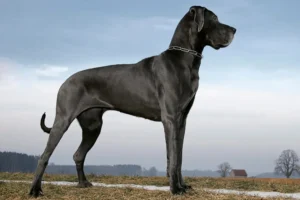
BOGO: buy a box of Longevity15 and get Yummy Combs free!
Shop now and get the BOGO deal today!
Joseph Roetheli, PhD

Highlights:
Small and toy dog breeds usually weigh around 10 to 30 pounds and are often considered easier for people with limited space.
Adopting a small or toy-sized dog breed means you’ll need to be aware of their specific needs (especially the need for exercise).
Offering your dog a supplement like Longevity15 is an easy way to support their whole-body wellness and promote longevity.
The iconic chihuahua or the long and lean miniature dachshund are classic examples of toy and small dog breeds. These loveable little yappers range in size but rarely exceed 30 pounds. They don’t require a ton of space and make perfect pets for people living in small apartments or sharing a living space with others.
However, just like any pet, they have health and wellness requirements you’ll need to know about before you choose a specific breed. It’s best to know before you adopt so you aren’t surprised when you take home a toy breed that barks incessantly or develops dental issues.
Likewise, it’s good to know the average life expectancy of your new pet. Small breeds usually have longer lifespans than larger dogs, and that may mean they need additional care as they get older.
There are certain proactive steps you can take to protect your pet from aging too quickly and help support their ability to live healthier and longer, with more tail wags and belly rubs for you both to love.
Toy dog breeds are generally classified as dogs that weigh less than 15 pounds in adulthood and are shorter than 12” tall.
There are 22 breeds in this group, including:
Mixed breeds may also be a part of this group depending on their particular genetic makeup. Toy breeds have no subcategories in terms of size, because they are at the polar opposite end of extra-large dog breeds.
Small dog breeds are classified as dogs that weigh between 16 and 29 pounds. Toy breeds are sometimes included in this category, but as their own subcategory.
Small breeds include dogs like:
Both toy and small-breed dogs work well for people who love dogs but don’t have room for a large animal or simply wish to avoid issues with large animals (like cleaning up after them). Small and toy breeds can be surprisingly active, so even though they won’t take up a massive amount of room in your home, they will require significant exercise and plenty of room to roam freely.
Every dog breed has breed-specific needs. You’ll need to provide your new furry family member with quality food, ample water, and, of course, plenty of healthy treats and belly rubs.
You’ll also need to purchase toys, mental stimulation tools, safety items like leashes and collars, and veterinary care. Understanding a specific breed’s needs will help determine which is best for you. If you work from home and need a quiet environment, a small dog that has a propensity for barking may not be the best fit.
Before you begin your search for the perfect pet, here are the considerations to keep in mind.
Surprisingly, small dogs sometimes need more space than larger dogs. Larger breeds may not need as much exercise (read: room to run) as a small dog will. There are a few lower-energy small breeds, like Shih Tzus.
Dogs need space to be maintained inside your home, too. They’ll need a specific place for their food and water and a bed (or two) large enough to accommodate them comfortably.
If you plan to crate-train your dog, you’ll need a crate that is large enough for them to stand comfortably without touching any sides and wide enough to wag their tale without hitting the sides.
Small dogs do well in virtually any type of living arrangement, including extremely small apartments or even rented rooms, provided they get enough daily exercise and mental stimulation.
Smaller dogs need a lot of exercise. Most small breeds seem to run on a motor like a small child. The amount of exercise your dog will need may vary depending on their breed and age.
Most dogs need between 20 and 60 minutes of exercise each day. The exercise can be broken down into small walks or bursts of playtime. For instance, you could take your dog for two 10-minute walks to get that 20 minutes of exercise they need.
Exercise can include running, walking, playing, or going to the dog park. If you work away from home and can’t give your dog the daily exercise it needs, consider hiring a dog walker or pet sitter to do the job for you during the week. This also ensures your pet gets plenty of mental stimulation and doesn’t end up crated all day.
Many future dog owners fail to calculate the cost a dog will need for grooming. Short hairs may require less grooming than long-hairs, but all dogs require some level of grooming both at home and professionally.
Grooming includes:
Many breeds may only need a bath once or twice a month and will never need a hair trim. Long-hair breeds will need regular cutting, de-matting, and possibly additional services in warm summer months to keep them comfortable.
In addition to professional grooming, you can expect to take care of your dog’s daily grooming needs at home. Daily brushing will help keep your dog’s coat shiny and healthy, while brushing their teeth daily will help reduce the risk of dental decay and associated systemic illness.
Of course, your dog will need trips to the veterinarian for check-ups, vaccinations, and routine medications like flea and tick prevention and heartworm prevention. Meeting with a veterinarian before adopting a dog can help you choose the right one.
Ask if they are familiar with your desired dog’s breed and if they can share any insights about that particular breed’s needs or health risks. In addition to routine vet care, you’ll need to practice good health care measures at home.
This includes daily brushing, checking for skin issues, and making sure their paws are healthy and they don’t have splinters or growths between their toes. Additionally, daily dental care can help protect your dog from tooth decay and loss, and reduce the risk they’ll develop gum disease, which can lead to systemic illness and even organ failure.
Small breeds and toy breeds are prone to certain health-related issues that medium, large, and extra large breeds are not. One of the biggest problems for small and toy breeds can be their teeth.
Due to the small space inside their mouths, small and toy breeds can suffer from dental disease due to overcrowding, which leads to the propensity for more cavities. Most toy and small breeds will need professional teeth cleanings more than once per year.
Additional health concerns include:
Knowing what to expect may be as simple as speaking to a veterinarian or doing some web-based research on the breed you plan to adopt so you know the risks associated with the particular breed.
Small and toy breeds live between 10 and 15 years. With proper care, these dogs may even exceed this lifespan, living into their teens. Unfortunately, dogs age faster than humans, which means each year of their life ages them faster and takes a toll on their bodies.
If you want to give your pet the best opportunity to live a healthy and long life, you can take steps to support their health span, or the length of time they live healthfully.
Longevity15 is a supplement that is made to help support your dog’s ability to live as long and as healthy as possible. Inside each daily packet (which can be added to your dog’s kibble at mealtime), you’ll find FA15™, the pure, sustainable version of C15:0, a fatty acid that is beneficial for both humans and dogs.
This fatty acid helps your dog by:
Longevity15 is recommended for dogs aged 7+. With age, our dogs experience age-related decline and can benefit from added support.
Why not give them something that is not only delicious tasting (thanks to the addition of Himalayan cheese) but great for their aging bodies? Longevity15 is the solution for supporting your dog’s wellness and giving them the chance to wag those furry tails as long as they can.
Adopting a small or toy breed is no small thing. You will be surprised by how much love and affection you can show a tiny creature and how much love you’ll receive from them. Taking care of them means giving them what they need and a little boost when they’re older.
Longevity15 is the easy way to support your dog’s long, happy life.
Sources:
Toy Group | American Kennel Club
13 Low-Energy Dog Breeds | PetMD
How Much Exercise Does a Dog Need Every Day? | AKC
Relation between periodontal disease and systemic diseases in dogs | ScienceDirect
Clients’ little dogs can have big issues | Veterinary Practice News
Updates, coupons, deals, and more!
Type anything...
We use cookies to provide you the best possible experience on our website. You consent to the usage of cookies by continuing to view our website. See our Privacy Notice for more information.